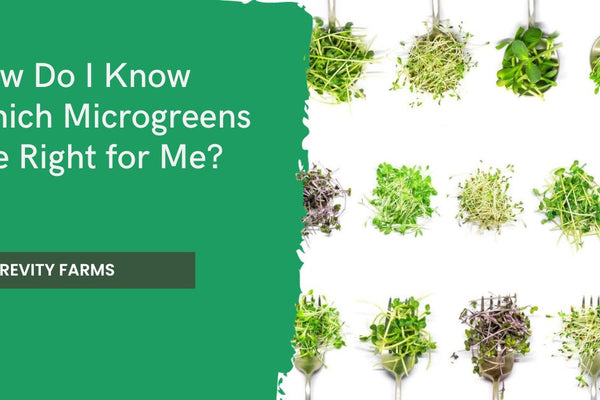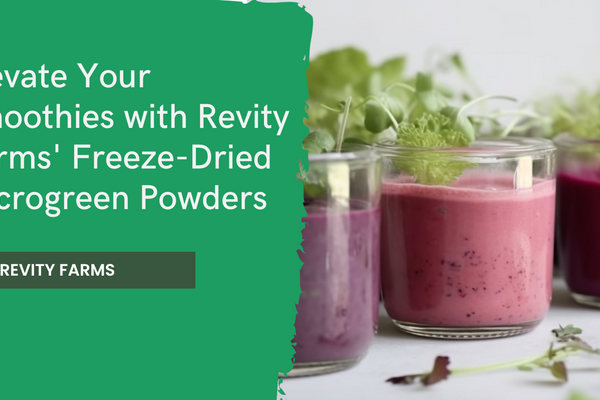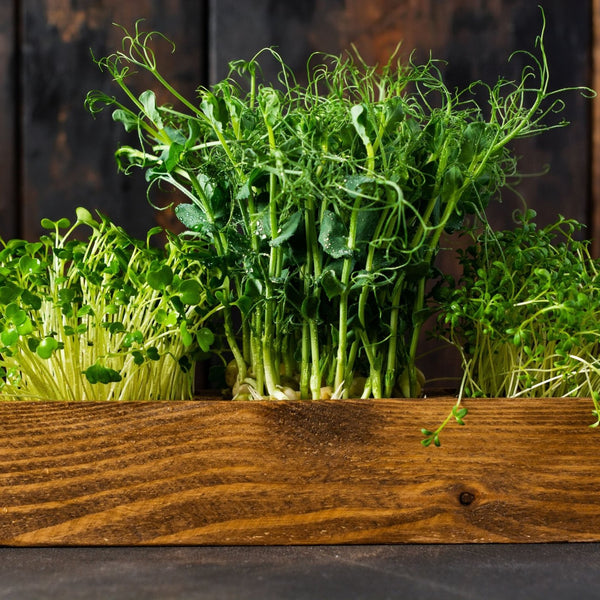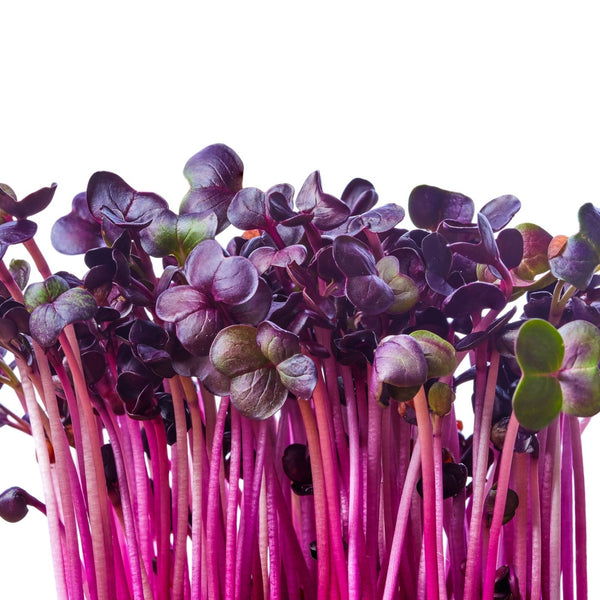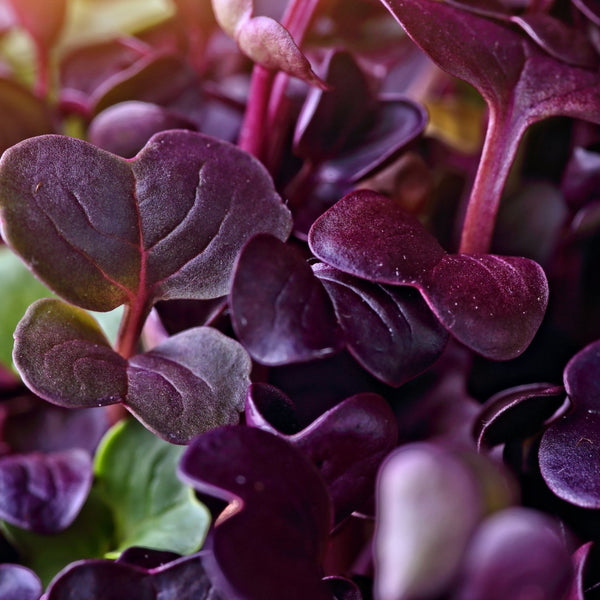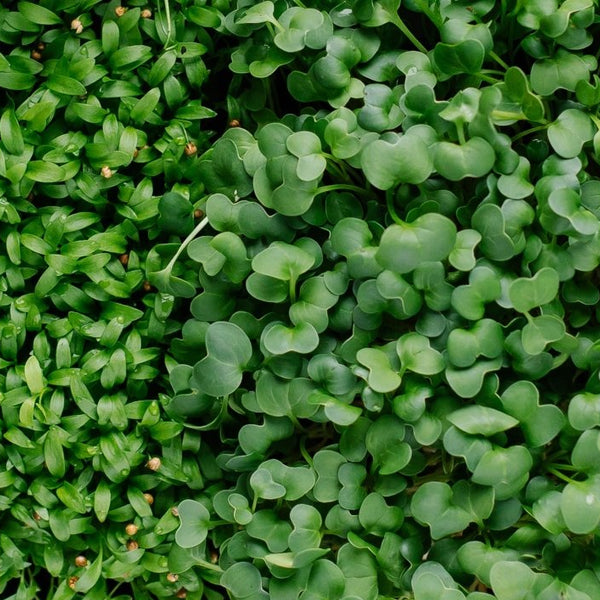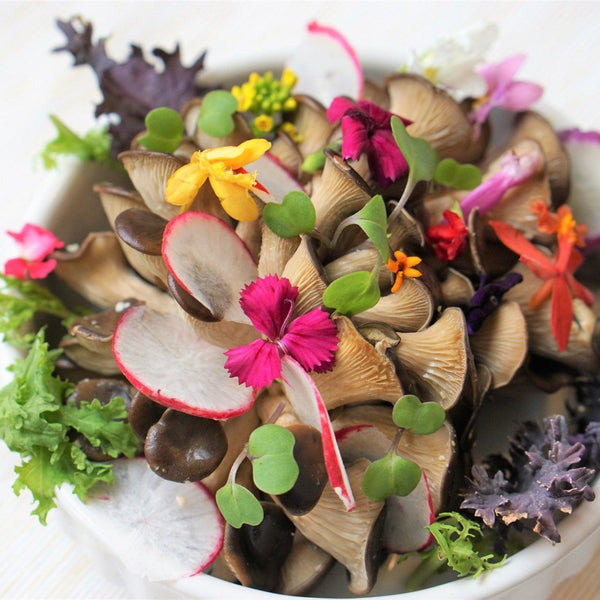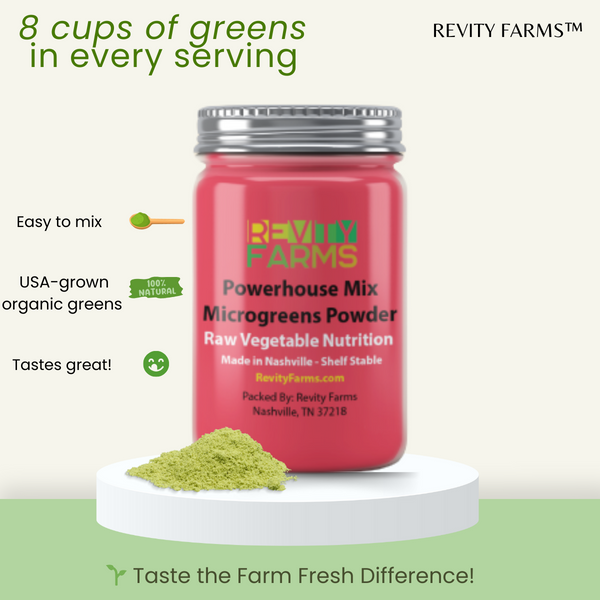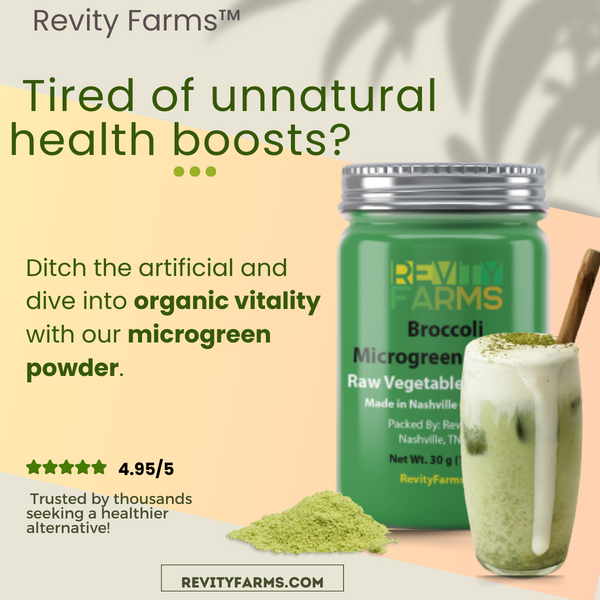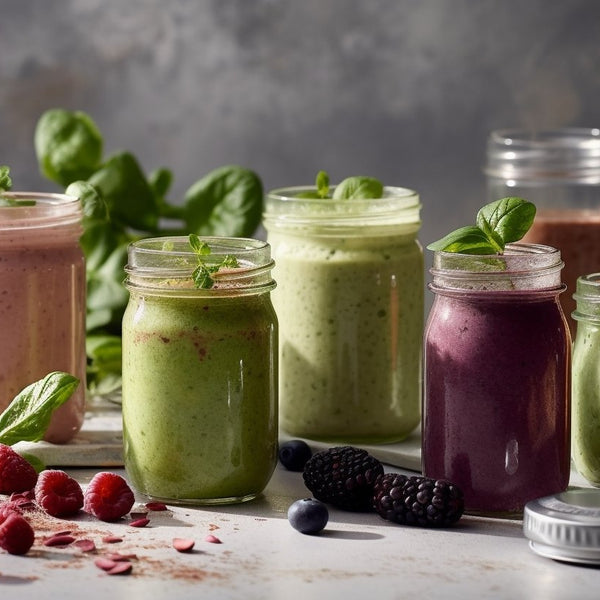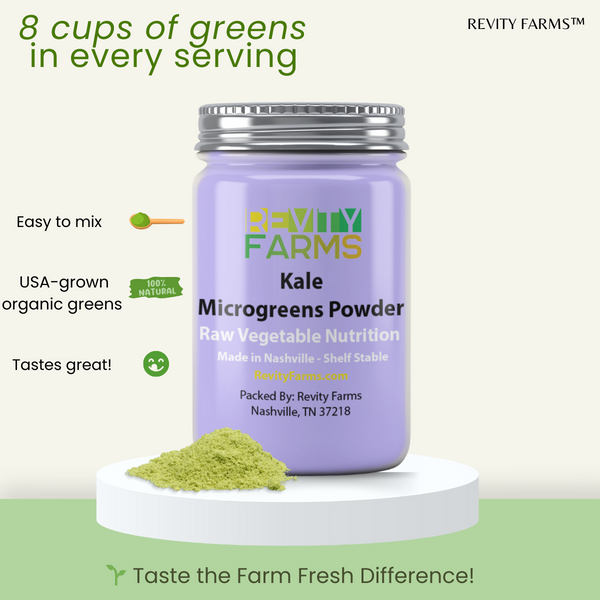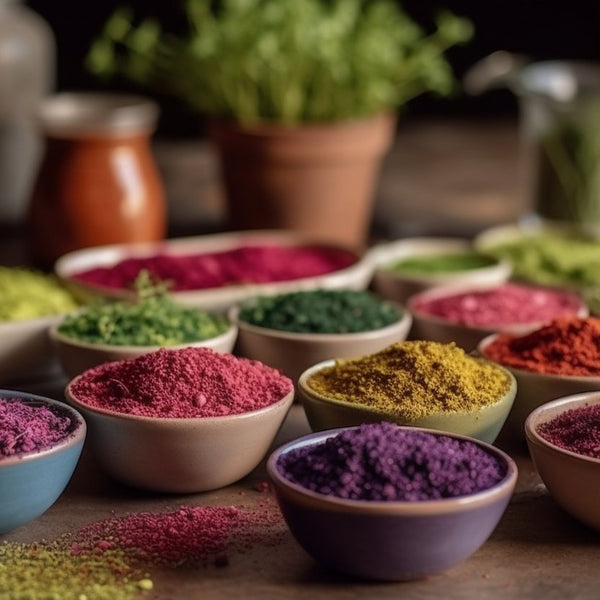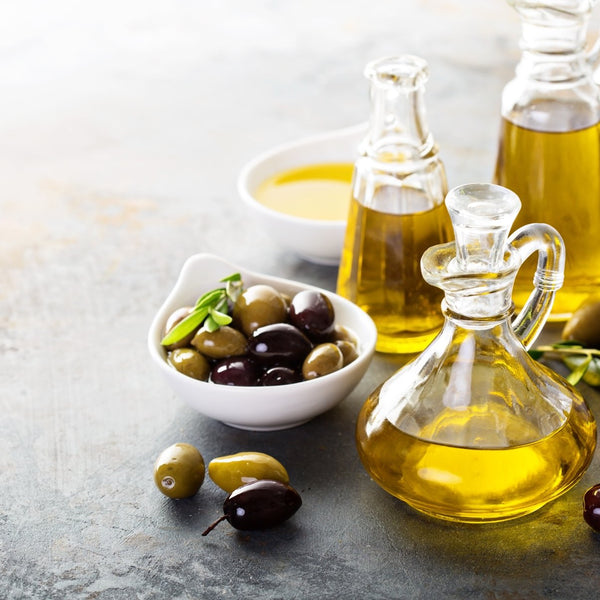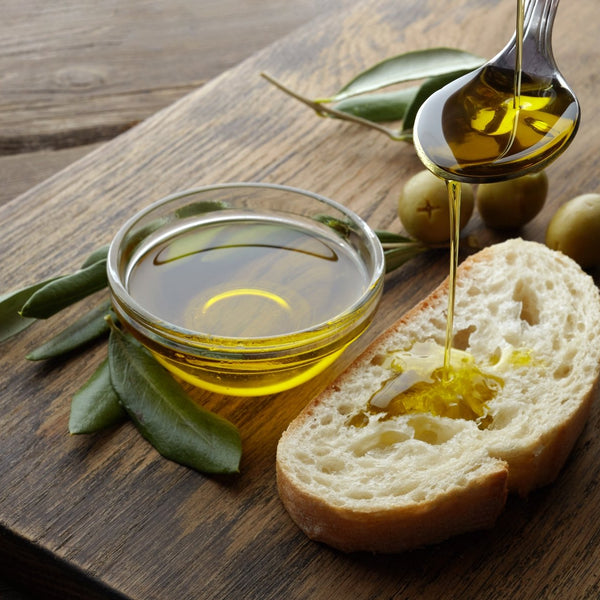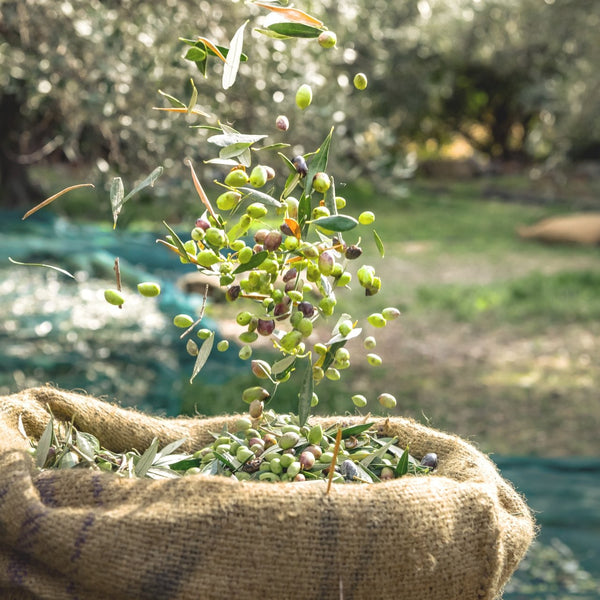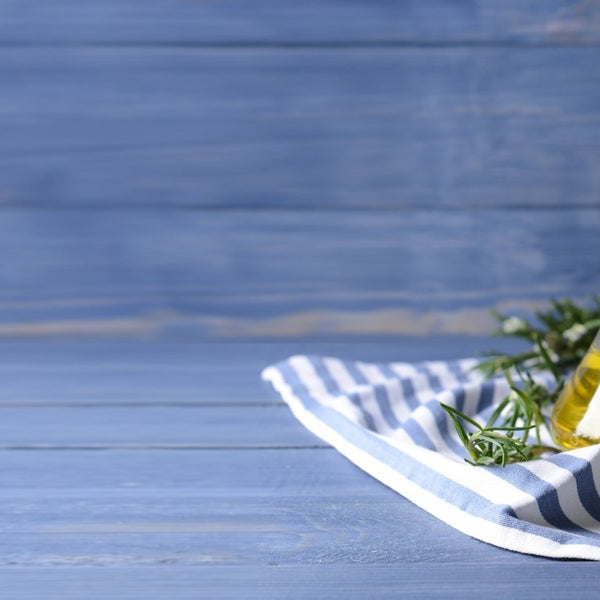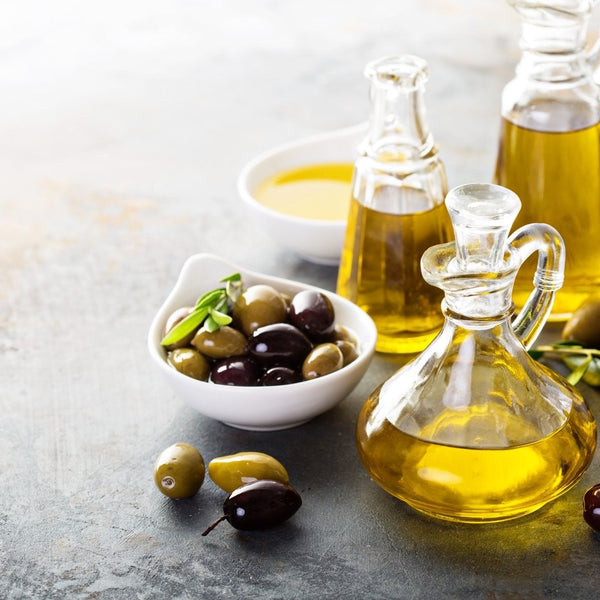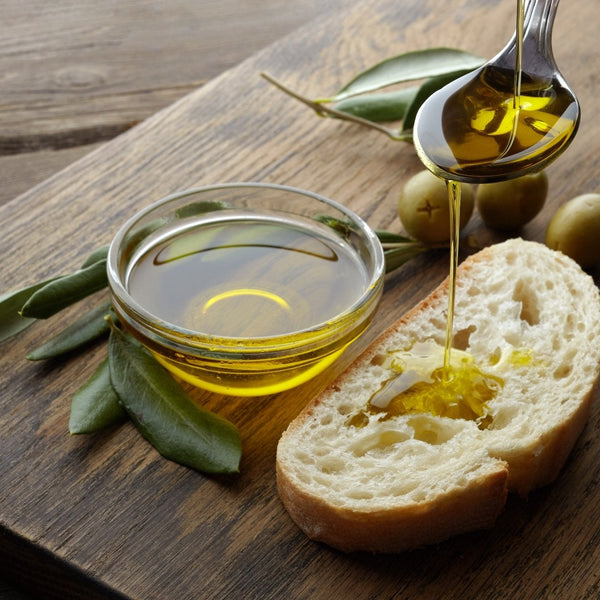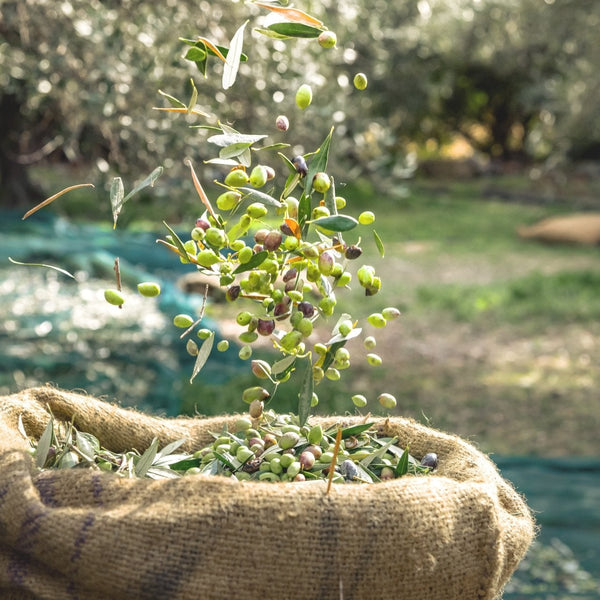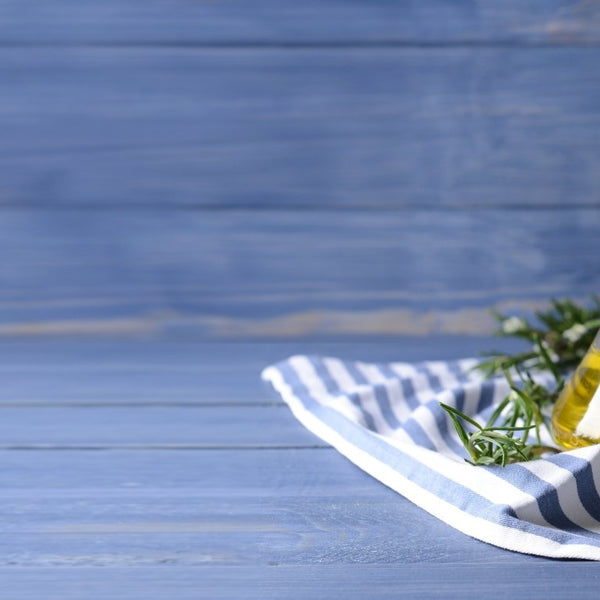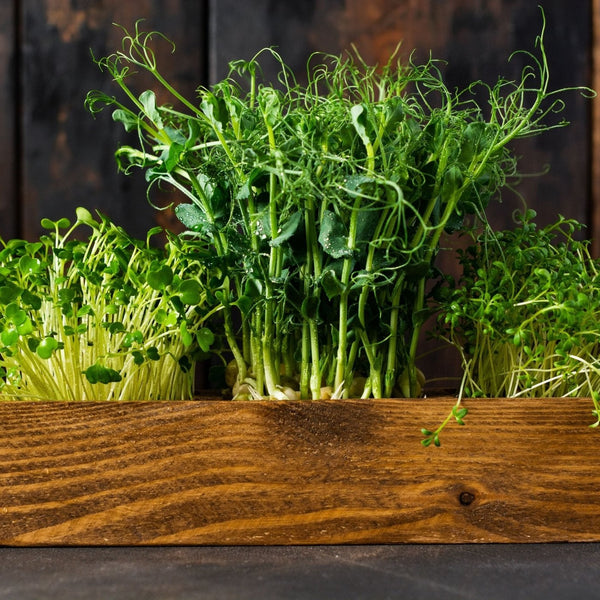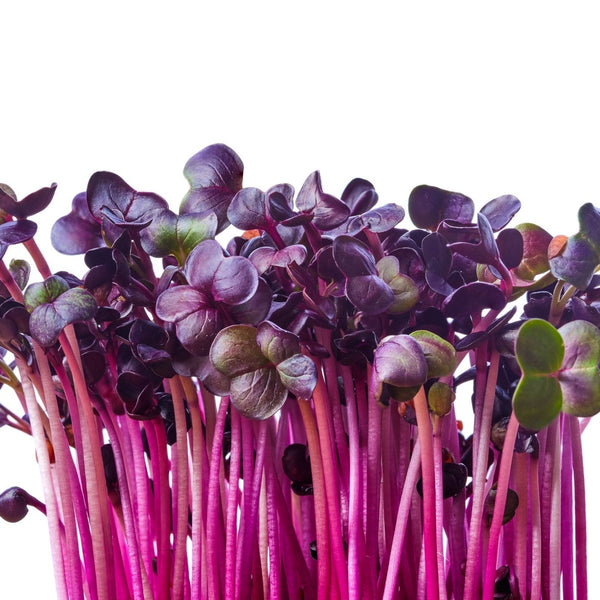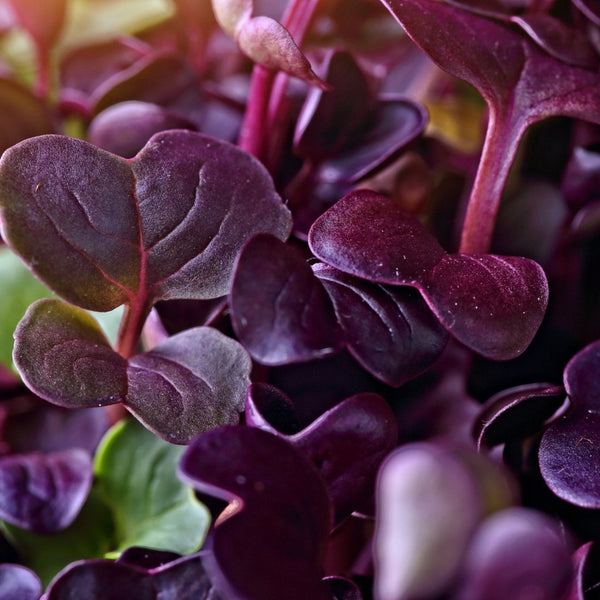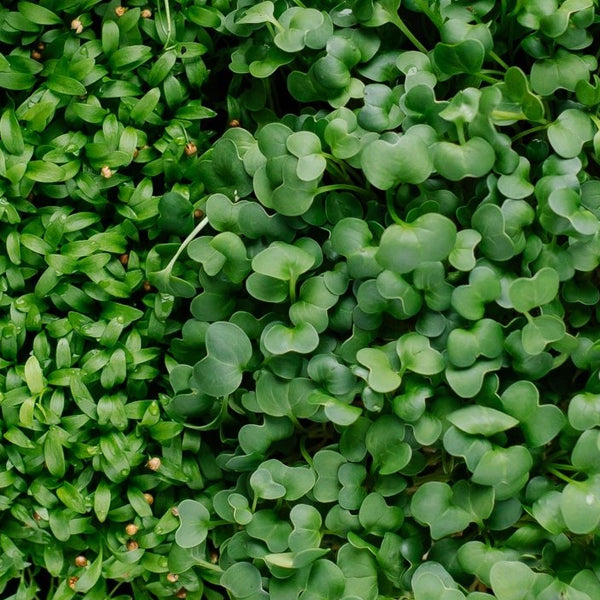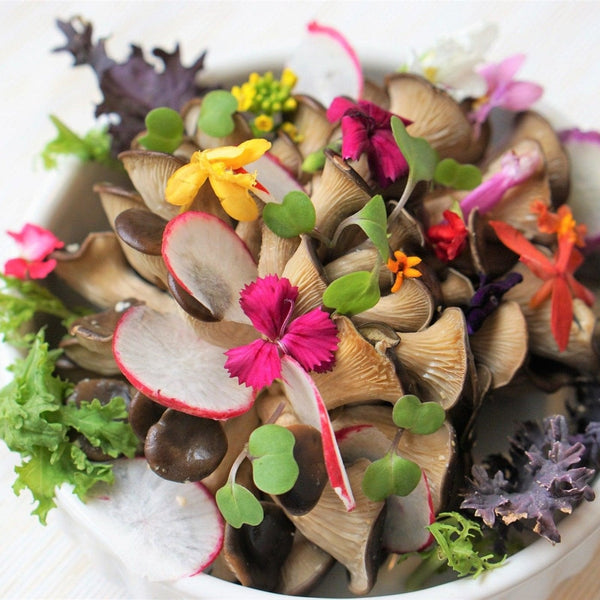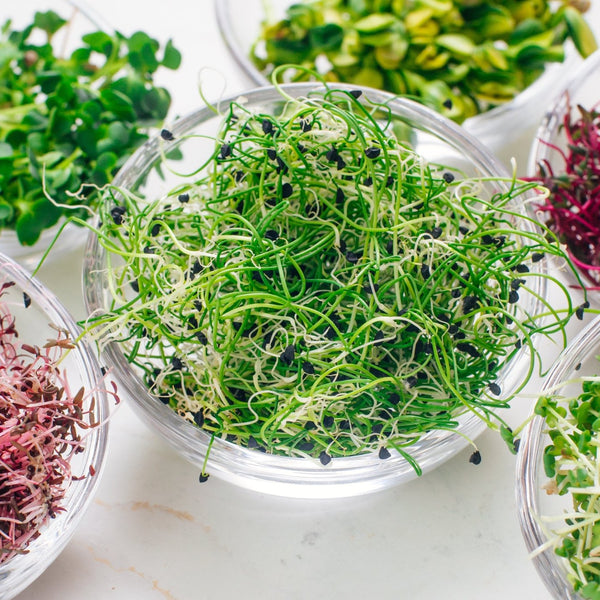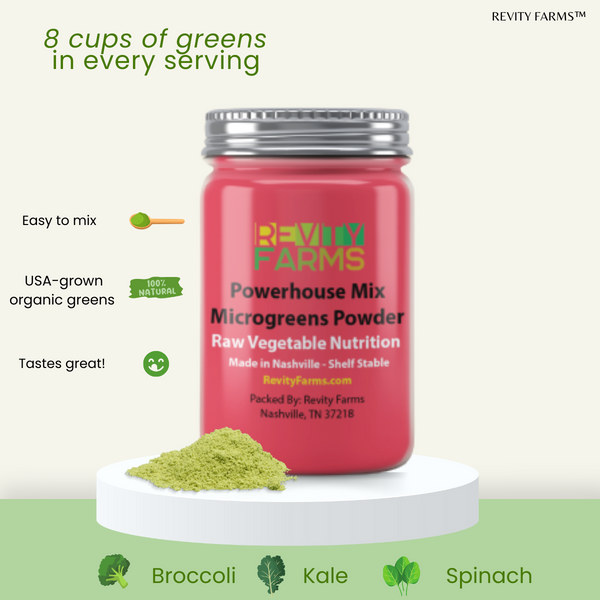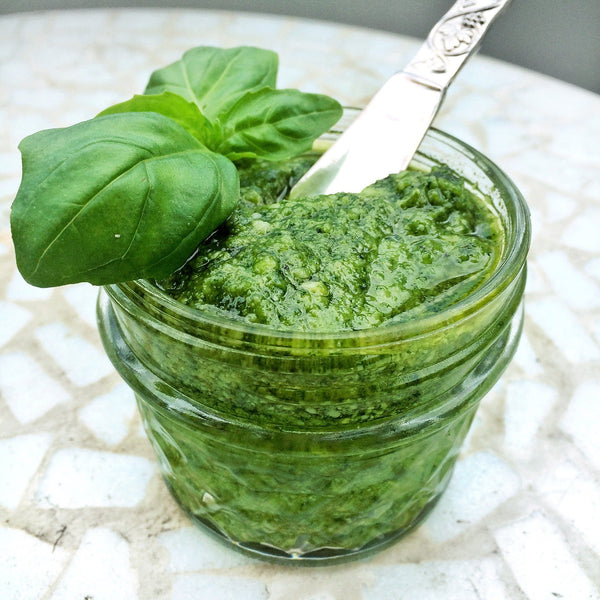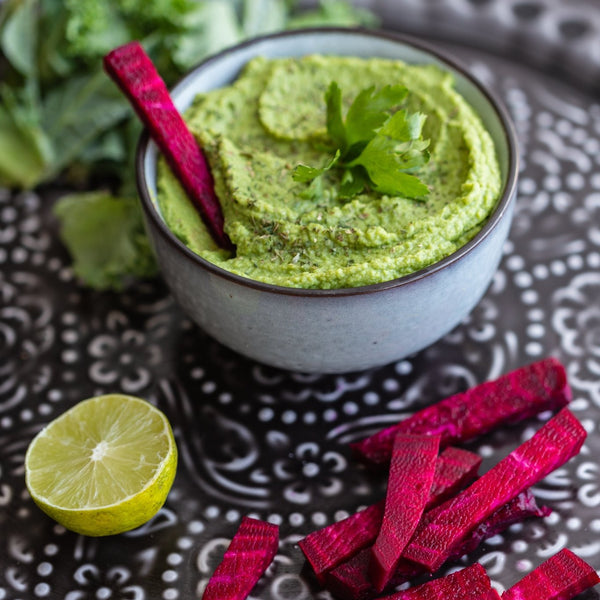Microgreens are nutrient rich and full of natural antioxidants. They provide excellent sources for important minerals such as iron, calcium, magnesium and zinc. Furthermore, microgreens are rich in vitamins A (beta-carotene), C, K and B6; they're also an excellent source of carotenoids which have been said to reduce the risk of cancer. There many ways and recommendations for growing microgreens. At Revity Farms we leverage Veritical Hydroponic Systems specifically for Microgoreens using state of the art lighting and filtration systems. But you can start very easily at home and have great results. You just need some time, patience, and trial and error in some cases.
There many ways and recommendations for growing microgreens. At Revity Farms we leverage Veritical Hydroponic Systems specifically for Microgoreens using state of the art lighting and filtration systems. But you can start very easily at home and have great results. You just need some time, patience, and trial and error in some cases.
It's great that a person can actually eat their vegetables with these beautiful edible shoots popping up all over the place! When it comes to which microgreens to start with, we recommend starting with pea shoots or broccoli sprouts because they taste milder than some other varieties like arugula or mustard greens. Make sandwiches out of them like you would lettuce leaves or add them into a salad for extra fresh flavor.
Start by buying seedling(s) or seeds for the microgreens you want to grow. Generally, it is better to buy these at a store and not online, unless you can validate quality and source.
Microgreens require a lot of light. A south-facing window in winter is usually best, but you'll have to provide your own supplemental lighting if there isn't enough sunlight available. Next comes soil that drains quickly; potting mix or perlite work great here too. Sprinkle some water on the surface before planting your seeds and cover them with about ¼ inch of soil or composted material (a little deeper). When they sprout, remove the plastic covering from where they're growing so more light can get in there.
You could mix old seeds with new water, according to the ratio recommended for a standard seedling potting mix (2/3rd of soil and 1/3rd of peat moss). Once in their final container, they're sun-sensitive and as delicate as regular sprinkler-grown vegetables; only strong enough light with complete frequency can help them survive past a couple weeks indoors.
Watering your plants isn't hard if you find a plant watering system that keeps plants watered for up to 3 months without having to worry about manually doing it. Watering is CRITICAL. There's a high chance of mold developing if you over water or if conditions are not right. Keep an eye out for that and it can render your crop useless.
Ensure to feed wtih correct nutrients after the first few days or ensure your soil contains correct nutrients.
Harvest and enjoy 8-12 days later!
Simple method - great for the kids:
-Tear off a sheet of paper towel and fold it in half to form a cup. Place the microgreen seeds into this cup and then cover with water, keeping the paper towel in place with your finger.
-Nurture for one day or so but NEVER leave the seedlings submerged for more than 24 hours - ALL soaking past that point will have nutrients sucked out from the roots and kill said roots. Change out the water every 12 hours without touching them with your fingers to stop them from oxidizing (spoiling).
-After about 2 days they should break through into soil; at this point, fill up some of your favorite potting mix (you can buy bags or make your own)
-Keep watered and ensure your potting mix has all the food they need, we recommend orgranic!
- Do not over water and harvest every 8-12 days and enjoy!

